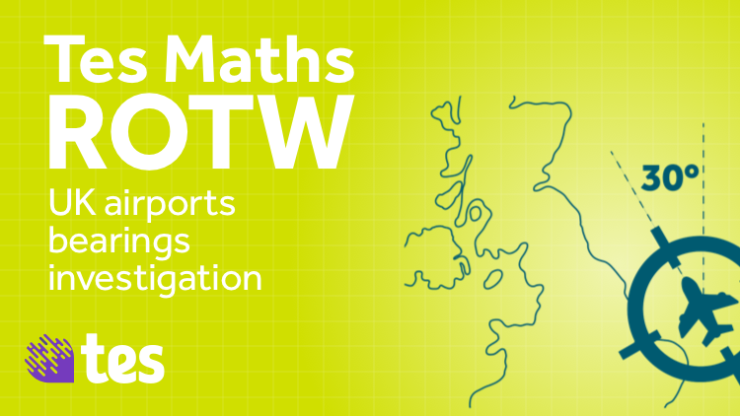To see all of the work I do for TES Maths, including Resource of the Week, Inspect the Spec, Pedagogy Place, Maths Newsletters and Topic Collections, please visit the TES Maths Blog here
What is it?
I remember about 14 years ago Douglas Butler at one of the excellent TSM Conferences showed me and my fellow delegates a fascinating fact about the numbers on airport runways that I have never forgot and have used every single year of my teaching career. Spoiler alert: the two digit number gives the bearing of that runway.
Ever since that revelation, this has been my go-to way to introduce bearings to my students. I fire up Google Earth, find some well known airports – asking students where they have been on holiday to is a good way to add a bit of relevance. Then I zoom in on the end of a runway, make a note of the number at one end and ask students if they can predict the number at the other.
This works well as a way of introducing bearings, providing a good “hook”; but the problem I have found is where to go from there? Usually in my case it was back to your bog-standard bearing textbook questions. However, thanks to this resource the fun of the airports continues! Students are presented with 15 contextual bearings questions that call upon their understanding of runway notation, followed by a lovely challenge question (answers are provided).
How can it be used?
I have found this resource to be great practice of the key bearings skills. Students understand the context if you start things off with Google Earth and that hook leads them nicely into these practice questions. I also love the variety of the questions – it is not a case of simply asking,“which city is at a bearing of 200° from Manchester?”.
Instead problems can be more realistic such as this example -There has been an accident in the sea and two helicopters have been summoned to help. One left Dublin airport from runway 16 and the other left Bristol airport on runway 27. Mark with a cross the location of the accident.
There is also a beautiful challenge question which intertwines the concepts of speed, distance and time and you always have the option to challenge students to make up their own questions to give to each other using the map as a stimulus.
Thank you for sharing!
Craig Barton
Download: UK Airports Bearings Investigation
View the author’s other resources
